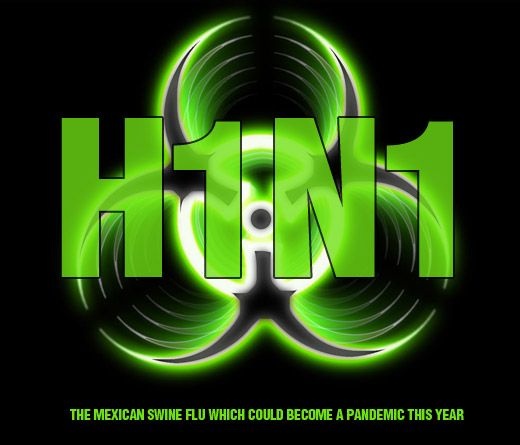3123
Interesting facts about the flu

In English the word flu sounds «influenza» and comes from the Italian «influentia», which means "influence", as it was believed that the disease leads to the impact of the planets, stars and moon - otherwise it would be difficult to explain such a sudden emergence and rapid spread of disease.
The British coined the word «influenza» in the middle of the 18th century, while the French called this disease «gripper», which means "grab" or "hook". Also in Arabic, there is a close in sound to the English name of the disease phrase - «anf-al-anza, which means" nose goat ", as it was believed that these animals were carriers of the disease.
The cost of treating patients during a flu epidemic, including lost wages and productivity, billions of dollars in the US alone.
The World Health Organization (WHO) estimates that between three and five million people around the world seriously ill with influenza, and at 10 million, this disease is more gently. Worldwide each year from the flu dies from 250 thousand to half a million people.
Starting from 1900, the world has seen four key influenza pandemic. The most recent was an outbreak of swine flu, which was given the official name of the «Novel H1N1 Influenza A». The last global pandemic that killed a large number of lives, there was an outbreak, which began in Hong Kong, from which killed about one million people (1968-1969 gg.). The Asian flu pandemic, which originated in China, killed on different data from one to four million people (1957-1958 gg.). An influenza pandemic, which began in Spain (the legendary "Spanish flu"), killed between 50 and 100 million people worldwide (1918-1919.).
Scientists believe that an influenza pandemic occur 2-3 times every hundred years.
The most dangerous and devastating disease of the 20th century was the Spanish flu outbreak that occurred in 1918-1919. Over the 24 weeks it has killed more people than AIDS in 24 years. She also killed more people than smallpox and the black plague in 50 years.
The Spanish flu killed more Americans than the two world wars, the Korean War and Vietnam combined.
"Funds" against the Spanish flu include whiskey drinking, smoking cigars, rinsing the mouth with salt water, walk in the fresh air and much more. Some doctors have dipped their patients in "ice" water, the other did bloodletting. Someone was trying to save their patients using surgery to remove from the pleural cavity blood and pus, but all these shifts did not help.
Virus A H1N1 (swine flu) has spread to Mexico and the United States in March and April 2009, although perhaps Mexico has become the epicenter of the spread of the disease a few months before. The first confirmed case of swine flu was recorded April 15, 2009.
The Center for Disease Control in the US renamed the swine flu virus in the «Novel Influenza A (H1N1), and the World Health Organization called him« Influenza A (H1N1) ». The name change was an attempt to protect from ruin pork producers around the world, although these changes have caused heated political debate.
During its existence, the swine flu is rarely transmitted from person to person and are rarely transmitted to humans who had direct contact with pigs. But the flu virus is easy enough to mutate, which are difficult to predict and therefore the current swine flu pandemic is more dangerous. In addition, since this new virus in humans thereto have not yet developed immunity.
The symptoms of swine flu include fever, cough, sore throat, runny nose, body aches, chills, nausea and fatigue. Often, the patient may be vomiting and diarrhea. Since all of these symptom common to many other diseases, swine flu is quite difficult to diagnose.
The new strain of swine flu spreads like regular flu varieties: inhalation of tiny droplets, which are formed in the air by coughing or sneezing, or carrier of the virus by touching an object that has just touched an infected person. Patients with swine flu people are starting to spread the virus even the day before, as they realized that the sick, and a few days after they get sick.
Well selected respirator may be a good barrier to the penetration of the virus into the body, if we combine this measure with a regular hand washing and avoiding large gatherings of people. Difficulty breathing through respirators, and they may not be suitable for children and people with "vegetation" on the face.
In contrast to the respirator mask (surgical, dental, isolation, etc.) do not provide full protection of the face and block the only big drops, but viruses are passed to the nose or mouth of a man trying to protect themselves with the help of a mask.
Many people born before 1957 are immune to the virus H1N1. Their immunity to the virus explain the fact that until 1957 there was a related strain of influenza virus to which these people have developed immunity.
Vaccination against swine flu may require 600 million doses much higher than the required number of doses of seasonal flu. Also, due to the fact that the swine flu and seasonal flu can circulate together to analyze the possible side effects of H1N1 vaccine may be difficult.
Just as in the 1918-1919 Spanish flu pandemic, pandemic influenza H1N1 2009 had a big impact on healthy young adults, perhaps because of what scientists call a "cytokine syndrome", that is when the immune system reacts too strongly and a blow to protect the body.
Pigs are unique in some way, as they may be infected with influenza strains that infect three different species: birds, pigs and humans. Thus, the pigs have become a good "natural laboratory" for new strains of dangerous virus.
Virologists still not quite sure how viruses have occurred, although in this respect eats several theories: (1) they were once living cells, but then turned to simpler organisms, (2) they are descended from the primitive particles capable of reproducing themselves, and (3) they were once part of the cells, which are separated from them and began to develop their own.
























